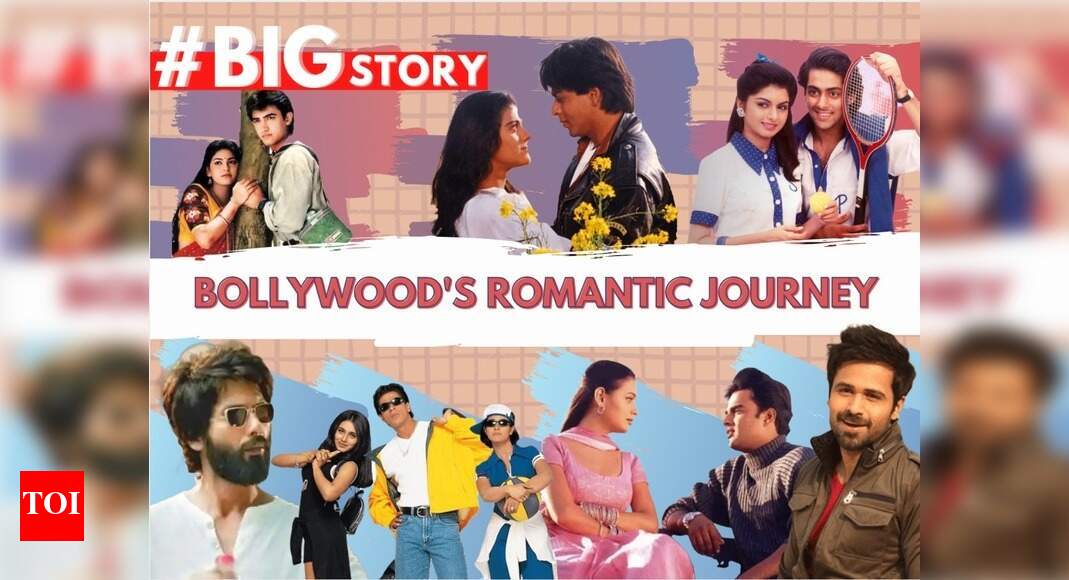#BigStory! Charting the evolution of love in Hindi cinema with its leading ladies, writers, and filmmakers – Times of India
Romance of the ’80s and ’90s
By the ’80s, epic and tragic tales of Laila-Majnu and Romeo-Juliet had been reprised several times over on the silver screen and boy-meets-girl romances were also losing their appeal. But promising fresh faces brought about a change in the narrative. ‘Silsila’ (1981), ‘Saagar’ (1985), ‘Chandni’ (1989), ‘Maine Pyar Kiya’ (1989), presented a new-age romance that came with the promise of a happy ending. Aditya Chopra’s ‘Dilwale Dulhania Le Jayenge’ that released in the ’90s, veered away from the rebellious love stories of the time and is still lauded for being a gamechanger as far as romances go.
Bhagyashree: During our era, it was a big thing if a boy held a girl’s hand
‘Maine Pyar Kiya’ (1989) featuring Bhagyashree and Salman Khan, was one of the most iconic romantic films of its time because it focused on friendship that develops into a romance. Speaking about the shift in love stories, Bhagyashree shares, “Romance was very innocent at that time. Not that there’s anything wrong with today’s generation, but everything is fast forward, because of which the chance of boredom comes faster. Love takes a while to grow, you have to enjoy the journey of romance, which was there in our time, whereas today everything happens very fast. The definition has changed because society has changed. At that time, it was a big thing if a boy held a girl’s hand, and asking for the first date was so important. We have had plenty of films on just that. Now, society has become very different so movies are bound to reflect what the youngsters are doing right now. I wouldn’t call it a romance at all because you have to add a prefix to it–like maybe a violent love-story–the adjectives have changed.”
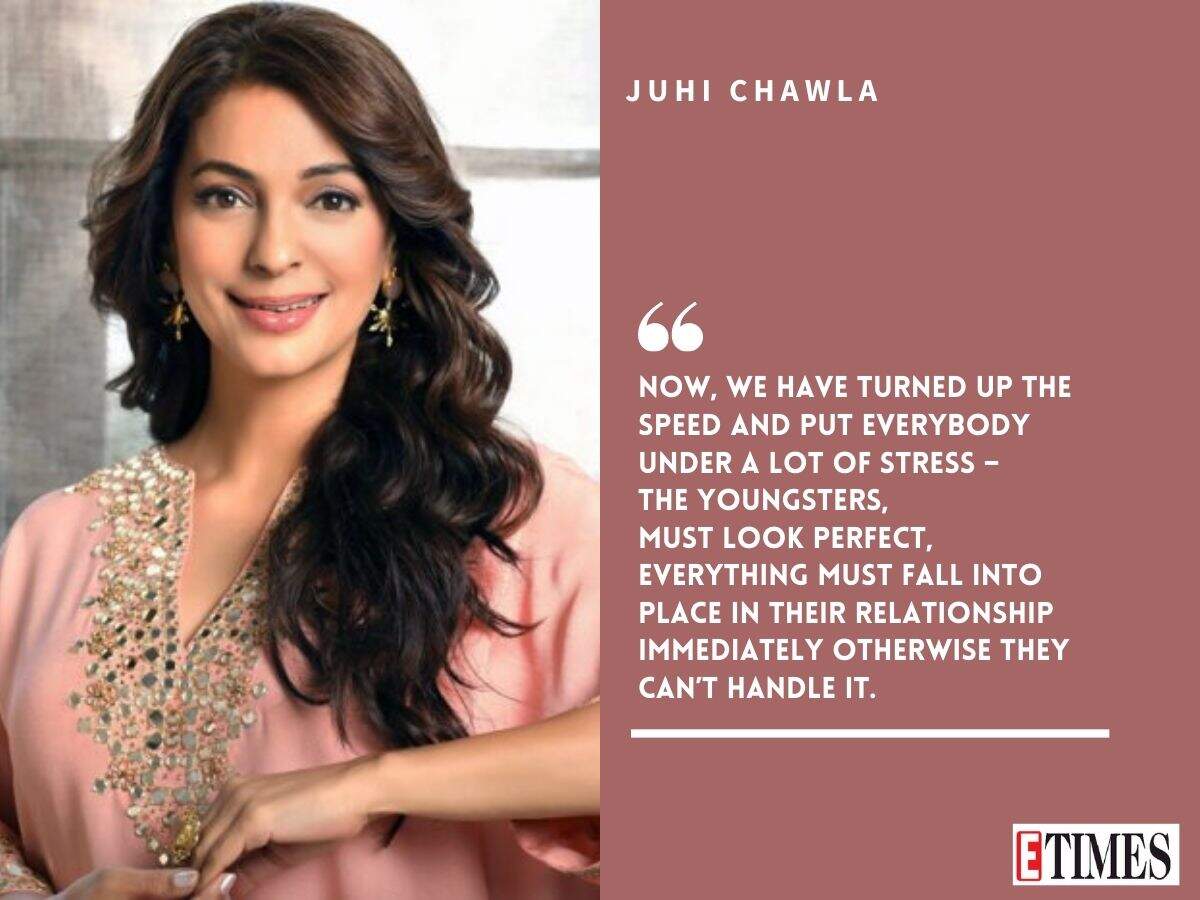
Juhi Chawla: There is a lot of stress around a love story, today
With films like ‘Qayamat Se Qayamat Tak’, ‘Love Love Love’, ‘Ishq’, ‘Hum Hain Rahi Pyaar Ke’, ‘Darr’ Juhi Chawla’s filmography boasts of several romances. Reminiscing about the golden era of romance, Juhi says, “Back in the day, they would write love letters and wait till a reply came in the form of beautiful poetry, in films. Then we moved on to a telephone and had to book a call which could get disconnected after three minutes if you hadn’t finished. I also remember during the shoot of ‘Bol Radha Bol’ in Ooty, we had to go to the public phone booth and wait in a queue to speak to our loved ones. Then came the mobile which made getting minute-to-minute updates possible. So, I feel that fundamentally love has not changed; just the speed at which we want it all to happen, our expectations of how it should be just perfect, has changed.” Analysing how romance, as a genre, has evolved, Juhi adds, “When I was doing films, about 20-30 years ago, the joke that went around was that the biggest problem facing our country, as depicted in films, was getting married. The biggest hurdle was how to convince your parents and get married to the person you love. Today it has changed – you start seeing someone, fall in love, then getting married.”
When quizzed about her preference the actress maintains that she would rather stick to the mushy times than indulge in new-age romance. “I feel even today it is so lovely to see movies of earlier times – they were so pleasant! It all seemed very uncomplicated and leisurely. Now, we have turned up the speed and put everybody under a lot of stress – the youngsters must look perfect, everything must fall into place in their relationship immediately otherwise they can’t handle it. I feel there is a lot of stress around a love story, today. Some of that ease, pleasantness, and depth, that used to be there before is missing now,” she rues.
Love in the 21st century!
The change towards 21st-century romances began with 1997 Yash Chopra-directorial ‘Dil To Pagal Hai’ and continued with films ‘Kuch Kuch Hota Hai’, ‘Hum Dil De Chuke Sanam’, ‘Mohabbatein’.
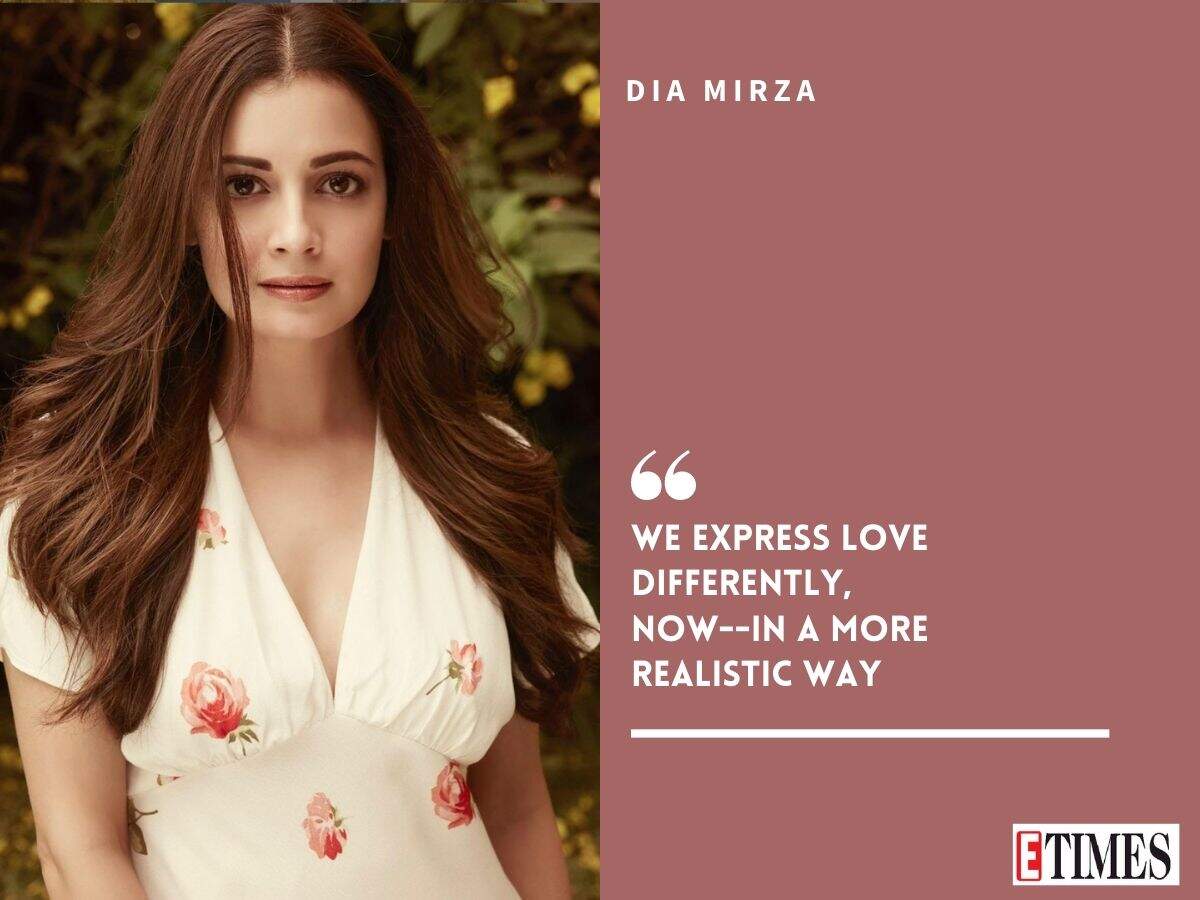
Dia Mirza: Today, love has to be filtered through many social realities
Dia Mirza and R Madhavan presented a completely different romantic story with ‘Rehnaa Hai Terre Dil Mein’ in 2001. The beautiful songs and innocent chemistry weaved a story that will be remembered for generations. Leading lady Dia tells us, “‘RHTDM’ is a beautiful memory but times have changed since then. So has the depiction of love. Romance, in any case, does not have to be literal. It can be expressed in many ways. And today, love has to be filtered through many social realities in cinema as has been depicted in films like ‘Sairat’ and ‘Masaan’. It has to negotiate with evolving gender roles, feminist discourses and it has to be adult and mature because even the younger generation today is far more aware of the world and far less naive than we were when growing up. I don’t think escapism is for them but I also don’t think romantic films are disappearing from our cinema. I just feel, we express love differently now–in a more realistic way as we saw in ‘The Lunchbox’ and in another Ritesh Batra film, ‘Photograph.’ Love is redefined by every generation. And this generation of filmmakers and viewers are exploring what love means to them. The results may not be what we are used to but they are interesting. For me, even a small moment of emotional intimacy between two people, as we saw in ‘Piku’, or an unspoken bond that was depicted in ‘October’ can be romantic. In my own creative journey, the bond between Kainaaz and Vedant in ‘Kaafir’ is the perfect example of a connection that defies cinematic conventions. Unvarnished human connections, you see, are romantic too. And far more believable.”
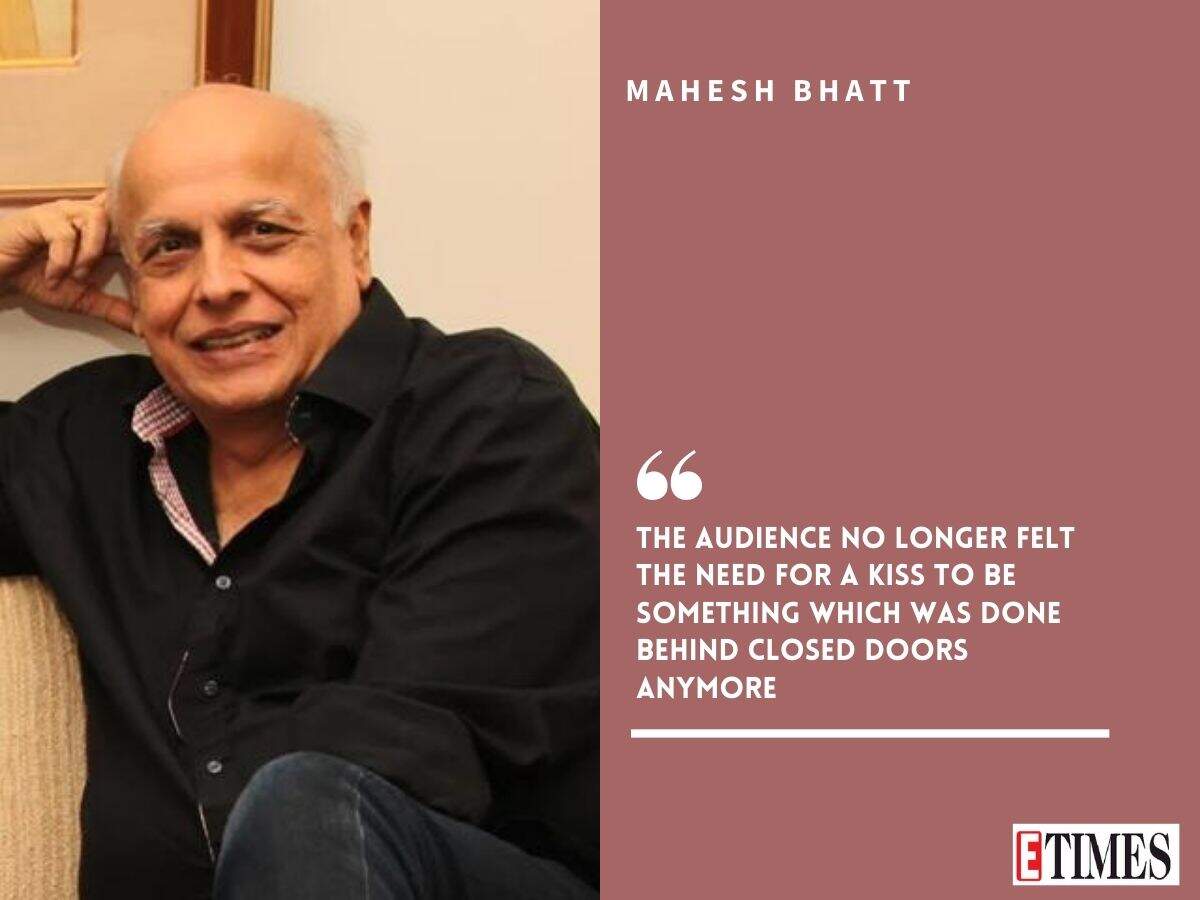
Mahesh Bhatt: The consumer wanted to see his morality being reflected on the screen
Back in the days, the culmination of love was depicted symbolically through flowers. But, with the turn of the century, the dynamics of expression of love changed too and Bollywood got its first-ever serial kisser. Mahesh Bhatt, who introduced nephew Emraan Hashmi as a lover boy in Bollywood, says, “In Hindi cinema bad people had sex and good people fell in love; that was the old maxim. That idea itself underwent a change as society changed and got more and more permissive. And that permissive behaviour was reflected in our movies. I remember how we changed drafts from the kind of movies we made at the beginning of 20th century. ‘Murder’ and Emraan construct was built on this new narrative because the world of the 21st century, the Indian consumer, had changed globally. The consumer wanted to see his morality being reflected on the screen. So, Emraan, being called ‘the serial kisser’ became very attractive as the audience no longer felt the need for a kiss to be something which was done behind closed doors anymore. It was not something to be embarrassed or apologetic about.”
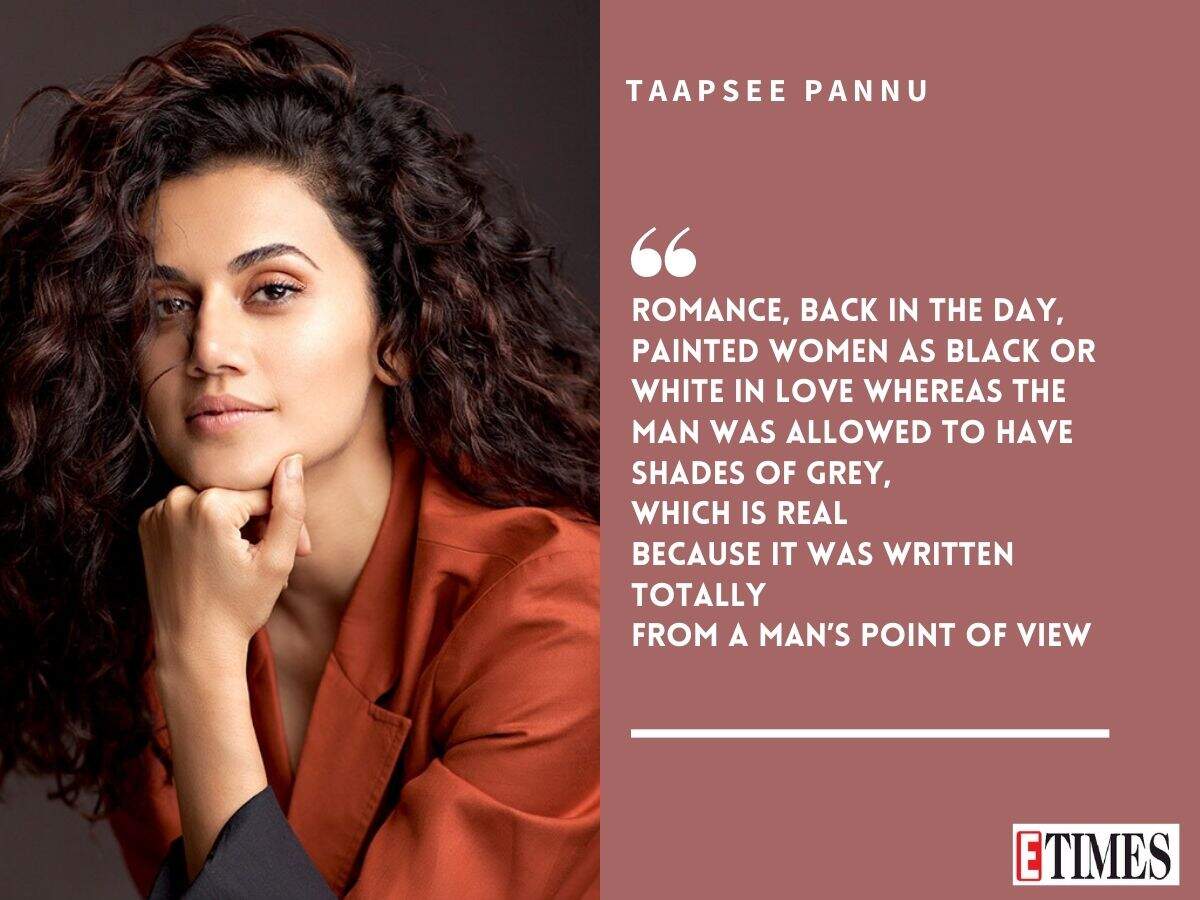
Taapsee Pannu: Stalker narratives have changed to a large extent
Be it Shah Rukh Khan going ‘K..k…k…Kiran’ in ‘Darr’ or Dhanush following Sonam Kapoor around in ‘Raanjhanaa’, the character of an obsessive lover has spun many narratives in Bollywood. However, Taapsee Pannu opines, “Stalker narratives have changed to a large extent and wherever it hasn’t it should change if you want to show love in the true light. The problem was all this while love, like all other emotions, was only shown through a man’s eyes and written through a man’s point of view even if it was for a woman. Now people are slowly widening their perspectives and with the newly introduced women’s perspective in cinema, this is changing.”
Speaking about the shift in romance, Taapsee adds, “Primarily romance, back in the day, painted women as black or white in love whereas the man was allowed to have shades of grey, which is real because it was written totally from a man’s point of view. Now, slowly, people are realising that love constitutes at least two equal individuals. So, to depict love they need to be fair to both sides. Hence there is a shift in the kind of love stories we see now. Also, the process of falling in love has changed over the years because of the development in the world. From a common concept of love at first sight it’s more like love at first click now because a lot of our life is revolving around social media and many relationships start there. So obviously the process of falling has changed and the options available are very diverse.”
New-age Love Stories versus Candy Floss Romance
Since mid-2000s, Imtiaz Ali’s films redefined Bollywood romance and gave a voice to the generation that didn’t look at love as a way of settling down. Ali’s characters challenged the ‘lovers-complete-each-other’ narrative of age-old Bollywood movies. Even otherwise, chocolate boys are no longer the quintessential heroes. Films like ‘Ek Villain’, ‘Band Baaja Baarat’, ‘Pyaar Ka Punchnama’ and ‘Highway’ broke the conventional mould and resonated with the youth.
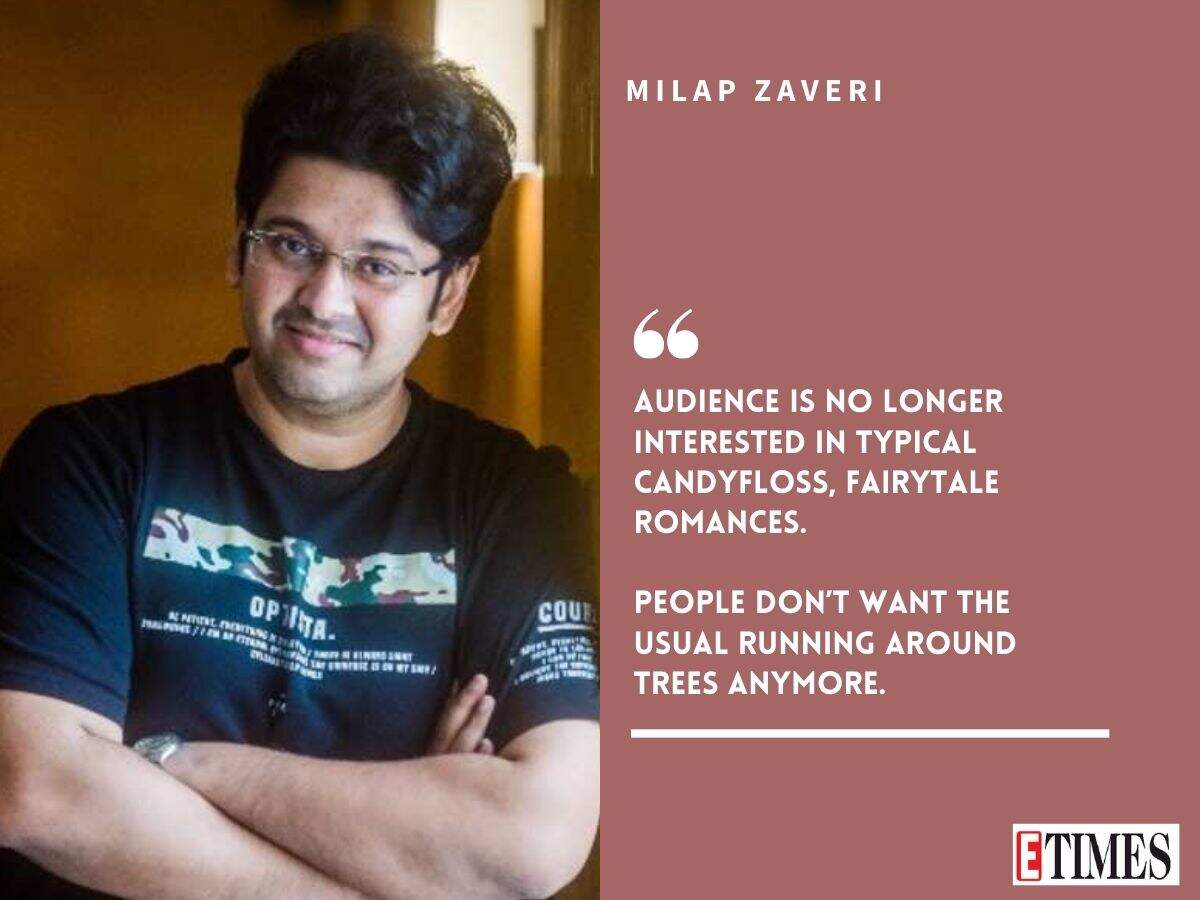
Milap Zaveri: The audience is no longer interested in typical candyfloss, fairytale romance
Milap Zaveri, who has weaved revenge and thrill into romantic stories, believes that the new-age audience demands much more than the regular love stories. “Cinema has changed a lot in the last few years. Mass cinema has made a comeback in a very big way, and the audience going to theatres wants entertainment. Traditional rom-coms have found their way to the OTT platforms and the love stories which have worked in theatres are the edgy, massy, powerful ones, whether it is ‘Kabir Singh’, ‘Marjaavaan’, ‘Ek Villain’ or ‘Malang’. Relationships are more fickle now and the audience is no longer interested in typical candyfloss, fairytale romances. People don’t want the usual running around trees anymore. They are looking for something that it more intense, that’s why such movies have clicked with the audience,” he summarises.
And actors are also willing to take up new challenges and not get typecast in the ‘chocolate boy’ image. “When SRK, Salman Khan, Aamir Khan were young, they delivered hits like ‘DDLJ’ or ‘Hum Aapke Hai Koun!’. But the younger generation of actors like Shahid Kapoor, Ranveer Singh, Ranbir Kapoor, want to experiment. Even Varun does an ‘October’ or a ‘Sui Dhaaga’, instead of a traditional love story. They are choosing to do darker films, more passionate love stories. For Shahid to do a ‘Kabir Singh’ or for Sidharth to do a ‘Marjaavaan’, was breaking away from their clean image,” adds Milap Zaveri, who has been the writer for films like ‘Ek Villain’, ‘Desi Boyz’ and ‘Housefull’.
Mushtaq Sheikh: Earlier, romance was more of the fantastical kind
Mushtaq Shiekh, who has written the screenplay for Shah Rukh Khan-starrer ‘Om Shanti Om’ and ‘Ra.One’, feels that romance has taken a realistic twist. He says, “I feel that earlier romance was more of the fantastical kind. We are still in the fantastical space, but we have nudged closer to reality. Romance and its frailties are explored with an urbane hue, but in small-town settings. It is reflective of India which is caught between the old and new. It contrasts with Shah Rukh Khan’s romantic films, which had an unmistakable urbane vibe and often featured exotic locales.”
Films like ‘Love, Sex Aur Dhokha!’ did not shy away from exploring the other side of romance. Emphasising on the representation of female characters in love stories, Mushtaq adds, “Another change has been the treatment of women characters. The traditional representation of women characters as kind and servile to characters with flaws and quirks has changed. Further exploration on this front will lead to better storytelling. It will be quite interesting to see how SRK would work in a romantic film set in the present times. This is not to say that one is better than the other. Both the approaches are relevant to the times the stories were told. Both the approaches embody the aspirational values of films and capture the indomitable feel of romance.”
Kamlesh Pandey: We have come a long way–from dying for love to killing for love
Detailing the evolution of romance as a genre, screenplay writer Kamlesh Pandey reiterates that romance has been changing the way the country, people, and their needs and aspirations have been changing. “There was a time when romance meant sacrifice and stories of failed love worked better than successful love. Then post the economic liberalisation, when the market got flooded with foreign goods, sacrifice for love took a back seat, and winning at love by hook or by crook became important. There were Hollywood spin-offs about obsessed lovers who could kill for love. So we have come a long way–from dying for love to killing for love,” he points out. Talking about iconic love stories, he adds, “’Tezaab’ was a violent love story. I used to describe it as ‘Awara of the ’90s because by then the hero of ‘Awara’ had turned into the hero. ‘Tezaab’ actually paid a tribute to many scenes in ‘Awara’. For example–the introduction of Munna (Anil Kapoor) in ‘Tezaab’ echoes the introduction of the villain KN Singh of ‘Awara’. ‘Khalnayak’, too, was based on the premise of the villain as a lover? What if Ravan fell in love with Sita? And, of course, in ‘Khalnayak’, the villain becomes a hero by making sure the heroine does not go to jail but unites with her lover. But it tried to introduce a new kind of lover–an unapologetic villain falling in love, not lust, which was a marked departure from the popular trends in Hindi cinema.”
Bharathi Pradhan: Since we’re done with kissing, living-in, and the obsession with a girl’s virginity, and they are no longer issues to be dealt with
Journalist Bharathi Pradhan feels that the change in romance is because the way women are portrayed in cinema has changed. “The only evolution I see is that earlier the women were very coy, and they were never the first ones to say ‘I love you’. But when Preity Zinta turns around and asks Shah Rukh Khan if he was a virgin in ‘Dil Se’, you knew that things were set to change. Yash Chopra was called the king of romance but I think his was chiffon romance, while Mani Ratnam’s romance was more sensuality and passion. I think the whole idea of virginity equal to purity, which in turn is equal to the eligibility of a girl for marriage went out of the window with such lines. Then we saw Preity and Saif being in a live-in relationship in ‘Salaam Namaste’ or Preity playing a schoolgirl who gets pregnant and decides to keep the baby in ‘Kya Kehna’. The latter was written by Honey Irani and therefore I credit a woman for bringing about a change in the way we looked at women,” she sums up. Talking about romance taking a back seat in Bollywood, Bharathi adds, “Romance has not gone out of the window. But you have already gone through the shock value of living together and women not being virgins. Do you remember that dialogue of Amitabh Bachchan’s Bhaskor tells Deepika’s Piku that she was not even a virgin without sensationalising it? Since we’re done with kissing, living-in together, and the obsession with a girl’s virginity, and they are no longer issues to be dealt with. So, now, we’ve moved on to social matters like erectile dysfunction, homosexuality, and infertility.

